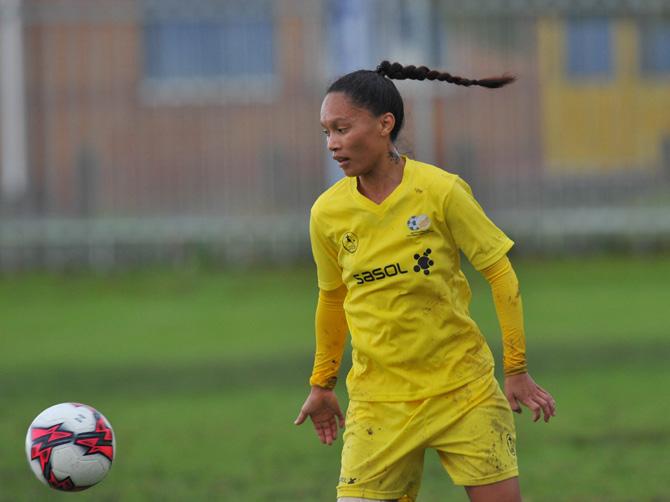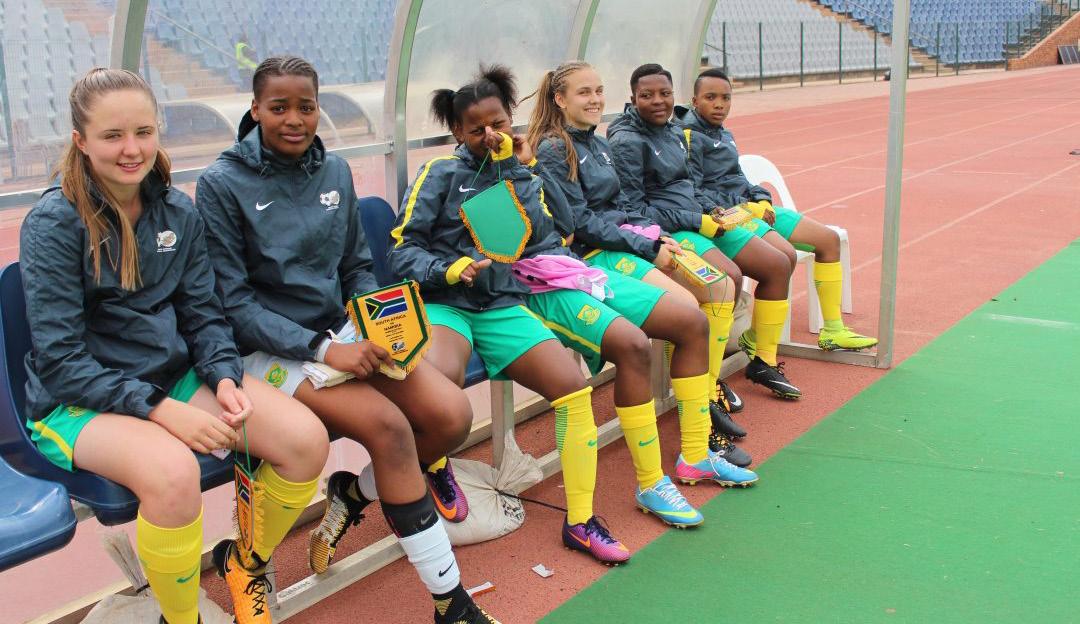
4 minute read
WOMEN’S FOOTBALL THE COVID-19 CHALLENGE
WOMEN’S FOOTBALL FACES COVID-19 CRISIS
BY SINETHEMBA MBATHA
The coronavirus came at a time when women’s football was still fighting for equality and recognition. Now a new challenge has been added to their list of struggles.
COVID-19 has caused a premature stop to different leagues across the world with some teams being forced to take drastic measures such as pay cuts and contract cancellations. It seems that when it comes to women’s football, the challenges outweigh the progress and success stories. Like how Lesotho’s top flight football club Kick4Life FC will be the world’s first club to pay both their men and women equally or how the 2023 FIFA Women’s World Cup will be the first of its kind with 32 teams (an increase from 24 in the previous world cup)


and to be hosted across two confederations with Australia and New Zealand as joint hosts.
While there have been steps taken in the right direction, the COVID-19 pandemic and its implications have set women’s football back quite considerably. It’s expected it will be the women’s game which will suffer the most. The main question is, what’s next for women’s football across the world during and post the pandemic?
There are fears among female footballers with regards to their future in the sport. Speaking in an overseas interview recently, Ada Hegerberg - Lyon star and the first ever female Ballon D’or winner who is known for having a voice when it comes to challenges relating to the women’s game - expressed her concern with the future of women’s football. Hegerberg: “It’s a strange situation for everyone and its very important women’s football doesn’t lose position in the fight for survival during the Corona virus”.
After the success and the Impact of the 2019 FIFA Women’s World Cup there was hope Women’s football would finally be placed on the list of priorities and be given the recognition and respect it deserves. There was hope more would be done to ensure that the momentum goes beyond just the World Cup but extends to women’s club football, grass root level, broadcasting rights, sponsors, investments and so much more. However the Coronavirus pandemic has once again made it clear that women’s football is still not a top priority and is still not treated with the same respect and passion as the men’s game.
Cancelling the women’s football seasons seemed like an easy decision to make whereas with the men, countless discussions

were held to ensure seasons are not cancelled but rather games played behind closed doors. The same thing could have been done for women’s football. Yet again it was evident which one is a priority and treated more seriously than the other.
Many female footballers are at risk of losing their livelihoods due to football’s global shutdown according to a report by players’ union FIFPRO.
“The lack of written contracts, the short-term duration of employment contracts, the lack of health insurance and medical coverage, and the absence of basic worker protections and workers rights leaves many female players at great risk of losing their livelihoods,” the report said.
“They have been part of the industry growth, from the emergence out of amateur and semi-professional status into this transition towards professionals.

It has been a long journey, and it is difficult for players to see that hard-earned recognition and visibility at risk.” Speaking recently at the FIFA Women’s Webinar, Sarai Bareman the Chief Women’s Football Officer for FIFA assured women that FIFA is planning to invest $1 billion over the next four years. Bareman further said, “We have tailor-made dedicated development programs for the 211 member associations. We have a very specific women’s football strategy that we are implementing and there is targeted research we are carrying out currently, to accelerate the professionalization of women’s football.” (source FIFA.com) This was an indication that the international football governing body is trying to doing its part to ensure that the women’s game does not take the backseat. However expects believe it will take more than FIFA to save the women’s game. Alexandra Gómez Bruinewoud who is a senior legal counsel at FIFPro explained they have been studying women’s football and

that more effort was put into the study during the coronavirus pandemic due to the impact the virus would have on the game. “We did some research and what we’re encouraging and suggesting is that actually, in this moment, it’s not enough to say ‘ok, we’ll invest the same in women’s football’, which is not even the case by far anywhere. It should be even more! They need extra support because the structures are weak and the basis is still not there.” Gomez told those who were in attendance.
After analysing both Bareman’s and Gomez’s statements there is an indication women’s football will be injected with the necessary resources to remain post the coronavirus pandemic, but one begs to question whether there will be anything left to save when the time comes. Ù








